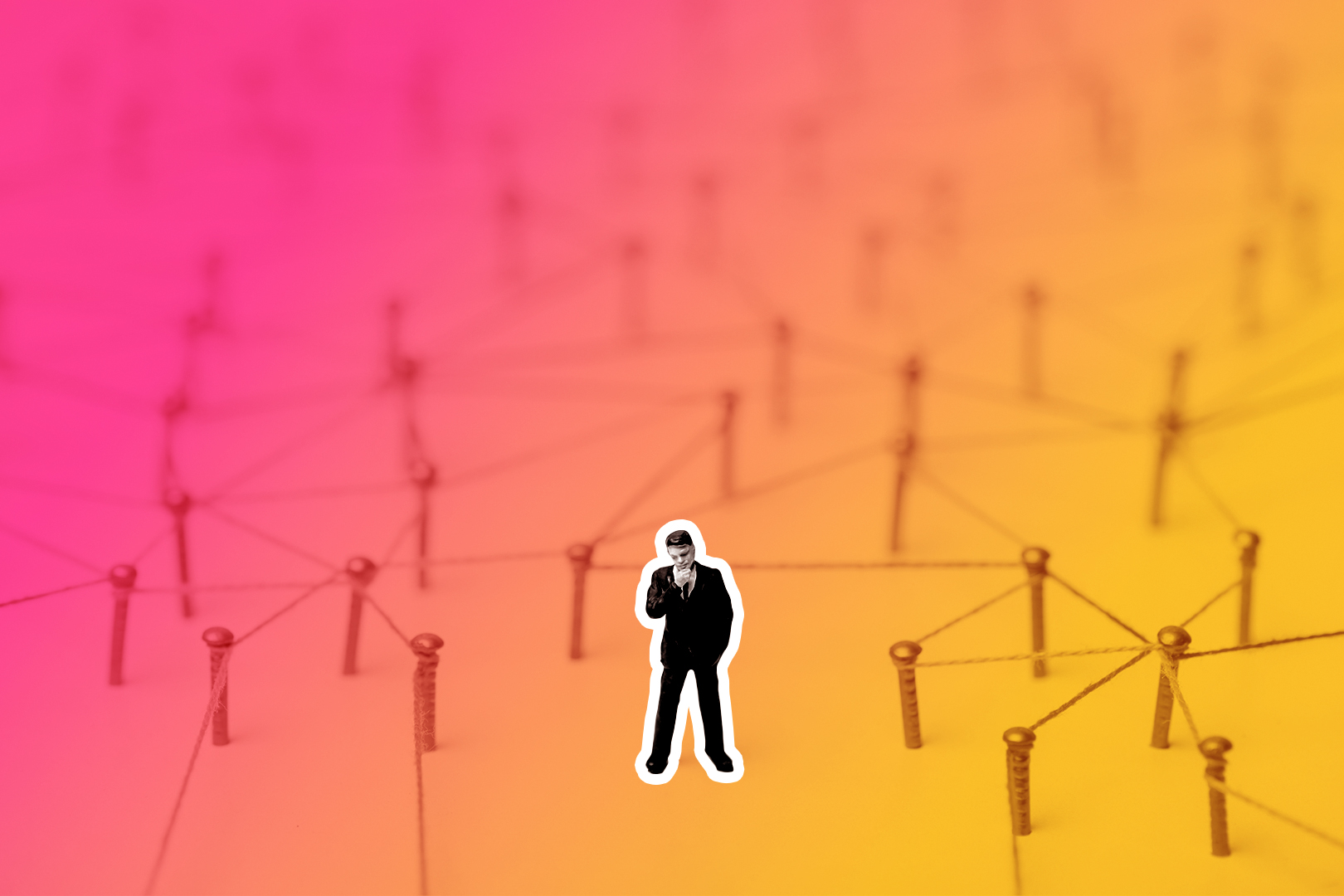Social selling simply works. If you log into LinkedIn consistently and build an engaged network who have learned to trust you, you’ll find that strangers are willing to buy from you.
(In fact, research suggests 78% of social sellers outperform their peers who aren’t using social media. It’s true. It works.)
But what if the idea of social selling makes you cringe?
What if you don’t like the idea of “bothering” people with your social selling outreach online?
What if sending someone a DM on LinkedIn makes your palms sweaty and your heart leap up in your throat? What if someone looks at your social selling efforts and calls you out for being inauthentic?
Then you wouldn’t be alone. A lot of people confuse “social selling” with “being an annoying person on the Internet.”
But the good news is that all you have to do to pull off the delicate balance between effective sales and cringe sales is follow some basic steps. First, be useful. Second, build social trust that compounds over time.
Let’s explore some great tips to help you hit that balance.
Tip #1: Stop Pitch-Slapping People
If you log into social media enough, it’s probably happened to you.
You connect with someone new on LinkedIn. Woohoo! A new friend!
Two minutes later, your inbox gets slapped with a sales pitch. “Hello [yourname],” says the DM. You feel insulted. You feel the cringe.
And you click “delete connection.”
No one wants to be a pitch-slapper like that, because none of us log into LinkedIn thinking “Gosh, I can’t wait to get a clumsy cold pitch today.” But the solution isn’t to swear off the practice of pitching altogether. Instead, you should focus on creating value first:
Discover What Problems Your Audience is Dealing With
Get interested in other people first. Maybe before you pitch anyone, you post a poll, or you reach out to someone you know with a direct message that asks them about their biggest challenge right now. Be wary of sounding salesy here; in fact, you can even tell them: “This isn’t a sale, I’m just looking to [fill in the blank].”
Build Trust by Sharing Your Learnings as You Build and Interact
Audiences on social platforms like LinkedIn love to hear about what you’re “building in public.” It comes across as especially authentic if you’re real about the challenges as well as the triumphs. Sometimes, it’s the lows of the roller coaster that are the most relatable. Share those, too.
Here’s an example from Close. Our founder once had an experience where he stayed quiet during a negotiation—he simply let the other party talk themselves into a better deal. That was a lesson learned, and it made for a simple, powerful LinkedIn post. Someone else who has been struggling with talking too much in negotiations might see that post, like it, and think: “Wow. I needed to hear that today.”
Trust: earned.
Allow Your Trust to Compound Over Time
Pitch-slapping people is searching for an overnight solution to land more sales.
But you’re playing the long game. You’re sharing insights and value, so you can become a go-to resource for others in your niche. You’re establishing a reputation as someone from whom people want to learn.
When you have that reputation, that’s when people start reaching out to you when they have a problem. Because now they think you might be the person to solve it.
Tip #2: Don’t Post AI Comments
Don’t think we don’t see you, AI commenters.
Yes, you, with your “great insight!” and your “thanks for sharing!” and your low-effort summaries of what we just posted. Yeah, we know you’re pressing the AI button.
And yes, we’re judging you for it.
We’ll grant you this: commenting to boost engagement is an effective tactic. But not if you let a robot do it for you. You’ll want to do a few things to make your comments worthwhile so people start to recognize your name:
- Use your words. Don’t sound like AI. Don’t say “nice post!” with zero elaboration. These are low-effort comments that, oddly, aren’t worth the time they took to post. It’s only when you add value that you start to see the network effects of conversation take hold.
- Offer a unique perspective. Don’t say, “Wow, sounds rough.” Say: “We ran into this same issue last quarter and realized our onboarding flow was the real problem. Fixed it by consolidating steps—cut churn by 12%.” Now you’re like someone who joined a conference panel to share something of value.
- Add value, humor, or insight. Bring something to the party. You wouldn’t show up to a dinner party without a bottle of wine, would you? So don’t show up wineless to the LinkedIn party, either.
Now the critical question: how often should you comment? Our rule of thumb: post 3-5 times per week, but comment on posts 10 times a day.
It will feel like grunt work at first. In fact, it will be grunt work.
But it’s this kind of reputation-building that makes authentic sales happen.
Tip #3: (Respectfully) Slide Into Their DMs
Ever been “like-bombed”?
It’s when someone suddenly engages with 10 of your previous posts like they want to put your LinkedIn friendship into hyperdrive.
And it’s not fun. It makes you feel like a commodity. It comes across as weird and desperate, putting the recipient on the defense.
So do the opposite.
Genuinely engage with one or two of someone’s posts at first. Wait a while. No sales pitch, no pitch slap. Later, you can then maybe slide into their DMs with a real response, something like:
“Hey—I really liked your take on [topic]. It actually made me think differently about [X]. I’m [Name], by the way.”
And then that’s it. You’re not launching a product. You’re not pitching your business. You’re just kicking off a relationship, going from “nameless ‘like’ on LinkedIn” to “human having a conversation.”
Tip #4: Be Consistent, Not Perfect
Want abs? You’ll probably have to go to the gym more than once in a blue moon.
So it is with social selling. It’s notabout going viral; it’s about showing up. Results compound over time, just like trust and reputation do.
Maybe you won’t get it right at first. Maybe you won’t always post polished thought leadership posts.
However, if you share something you've learned, consistently add value to good conversations, and keep showing up, people will start recognizing you. And they will start recognizing you with a smile, too.
Then, when people are ready to buy what you sell, who do they think of? That helpful, insightful person who keeps showing up on their feed.
Taking the Cringe out of Social Selling
Social selling is cringeworthy when you place hacks above humans. It’s a long game—something built on trust, value, and consistency. But the good news is that if you keep showing up, you can build a new sales pipeline in which people reach out to you with opportunities.
Remember: even buyers don’t want to be sold to. They want to work with someone who gets it. Your job isn’t to pitch-slap. It’s to go out there and be that someone for them.












